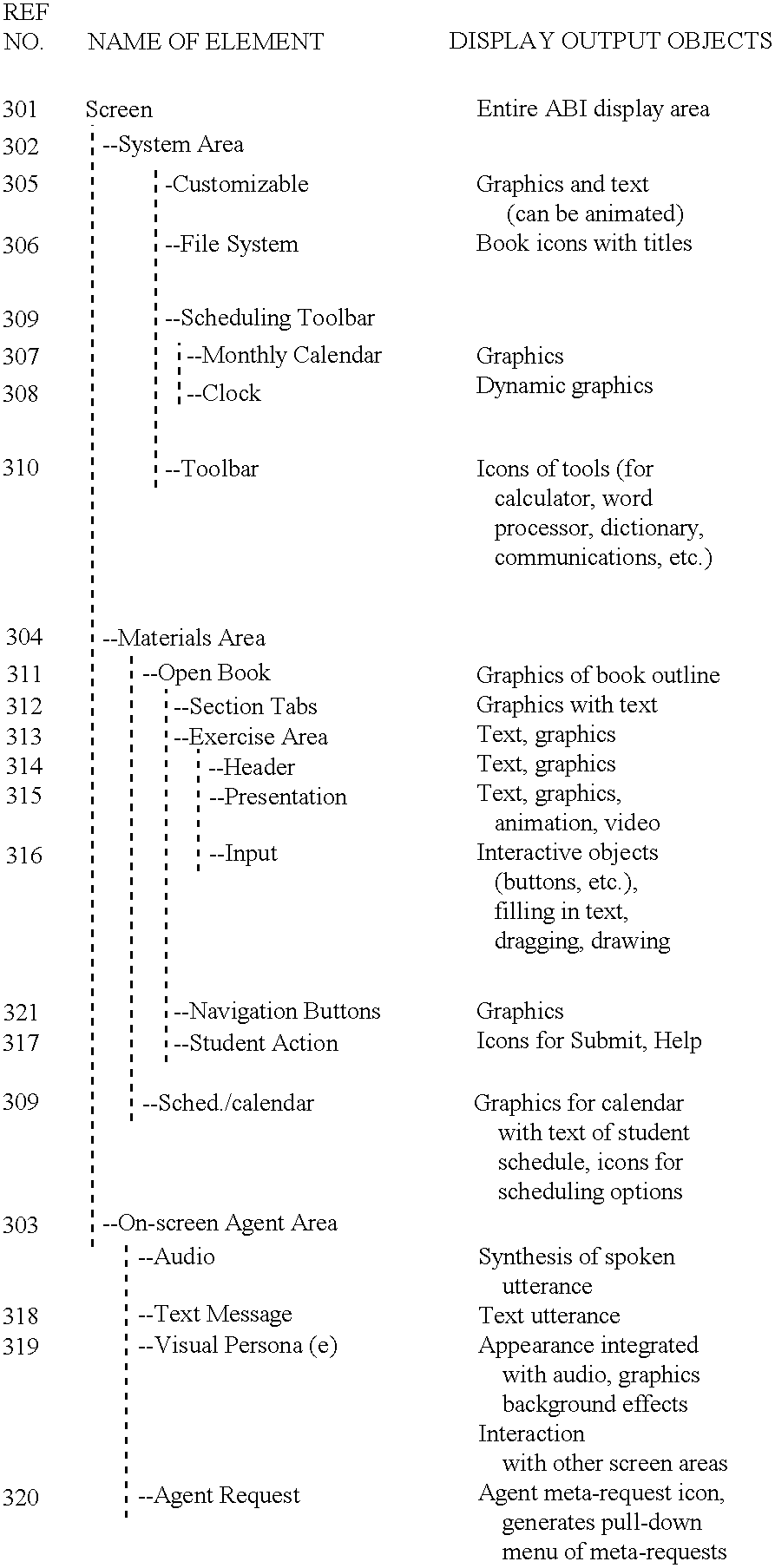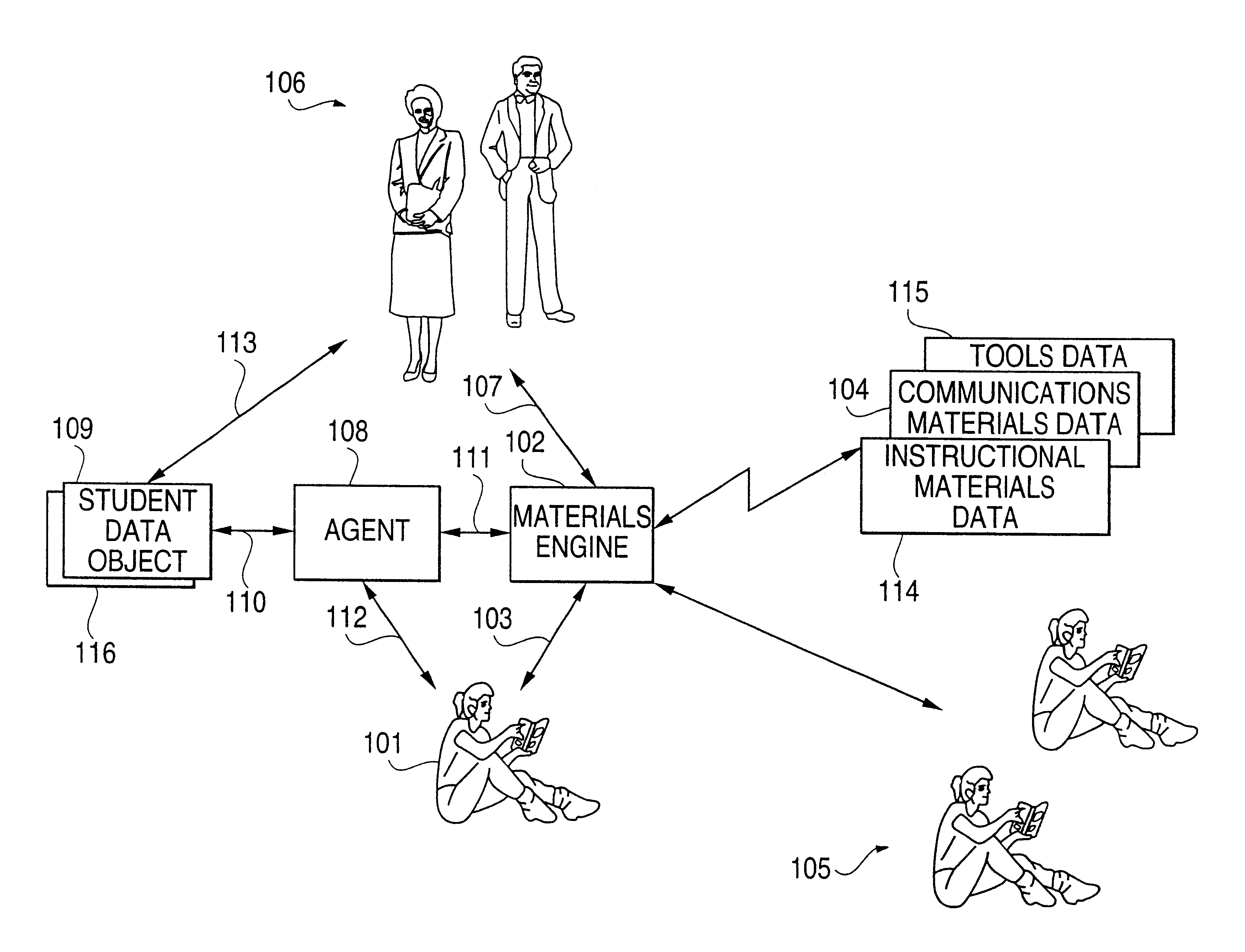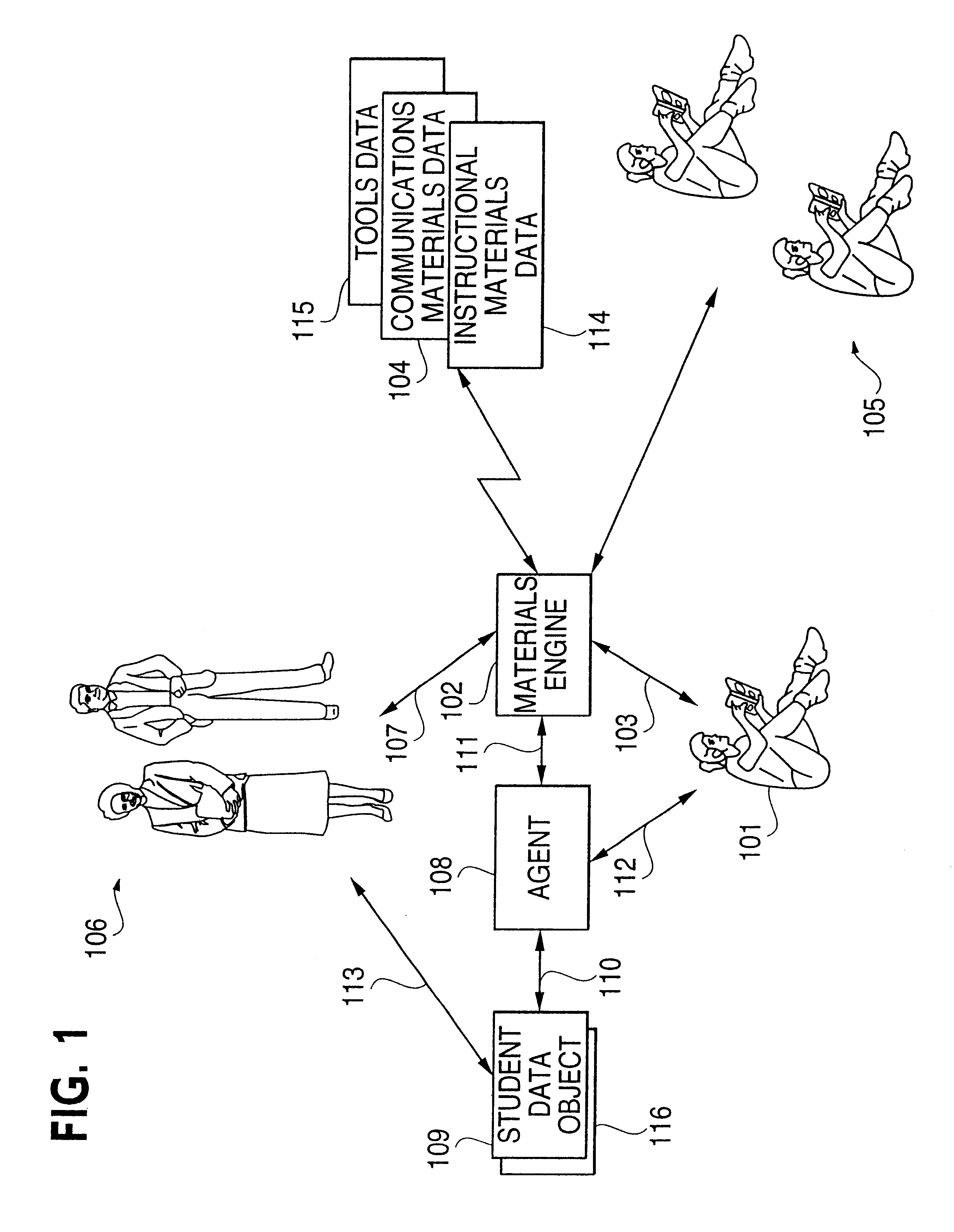Agent based instruction system and method
a technology of agent-based instruction and instruction system, applied in the field of agent-based instruction system and method, can solve the problems of limited application of computers in education, system provision, failure to effectively integrate systems into the existing classroom in elementary and secondary schools, etc., and achieve the effect of high configurabl
- Summary
- Abstract
- Description
- Claims
- Application Information
AI Technical Summary
Benefits of technology
Problems solved by technology
Method used
Image
Examples
Embodiment Construction
Sec. 5.1 presents a general overview of the Agent Based Instruction system. Sec. 5.2 describes the preferred hardware and operating software configurations. Sec. 5.3 describes details of the instructional interface between the ABI system and its users. Sec. 5.4 describes in a general fashion the software structure of the ABI system with subsequent sections describing each component in a more detailed fashion. Sec. 5.5 describes the instructional materials and the tools in a more detailed fashion and Sec. 5.6 describes the agent in a more detailed fashion. Sec 5.6 includes detailed description of the preferred interface between the agent and the materials in the ABI system.
5.1. ABI System Overview
In the following, the systems and methods of this invention are described in the context of a school system, with examples drawn primarily from elementary education. This invention is not so limited. It will be apparent to one of skill in the relevant arts that this invention can be applied ...
PUM
 Login to View More
Login to View More Abstract
Description
Claims
Application Information
 Login to View More
Login to View More - R&D
- Intellectual Property
- Life Sciences
- Materials
- Tech Scout
- Unparalleled Data Quality
- Higher Quality Content
- 60% Fewer Hallucinations
Browse by: Latest US Patents, China's latest patents, Technical Efficacy Thesaurus, Application Domain, Technology Topic, Popular Technical Reports.
© 2025 PatSnap. All rights reserved.Legal|Privacy policy|Modern Slavery Act Transparency Statement|Sitemap|About US| Contact US: help@patsnap.com



